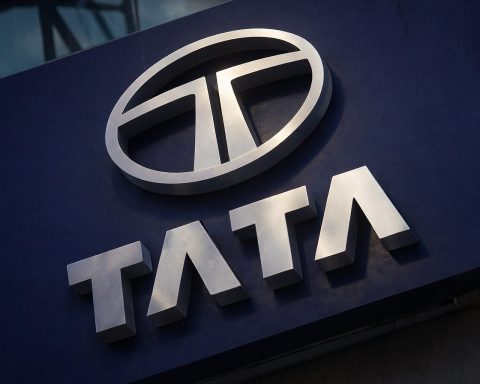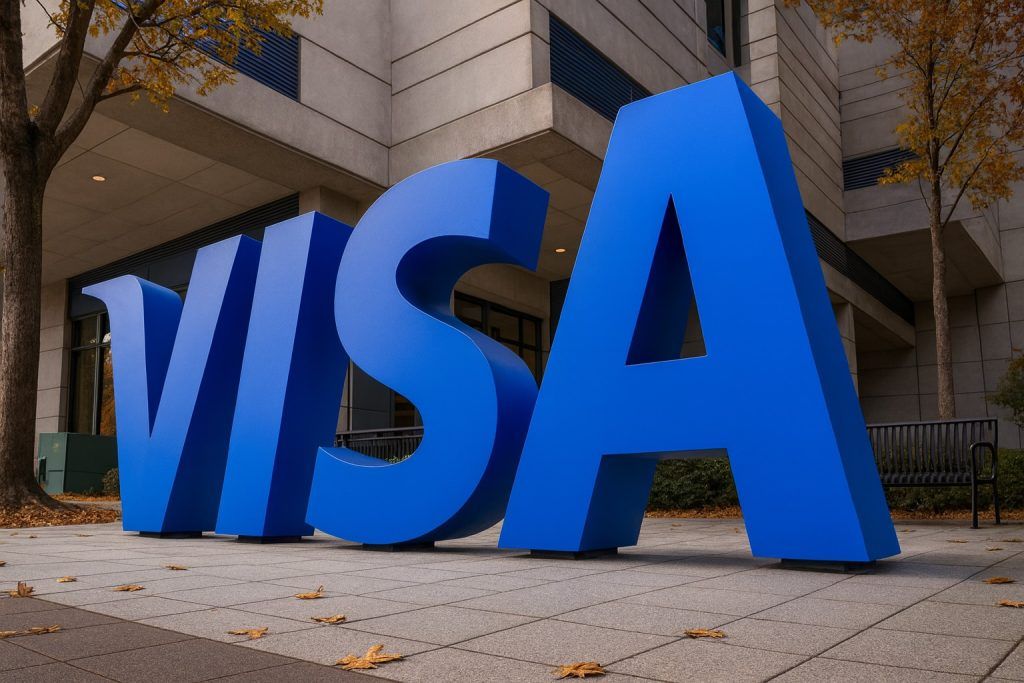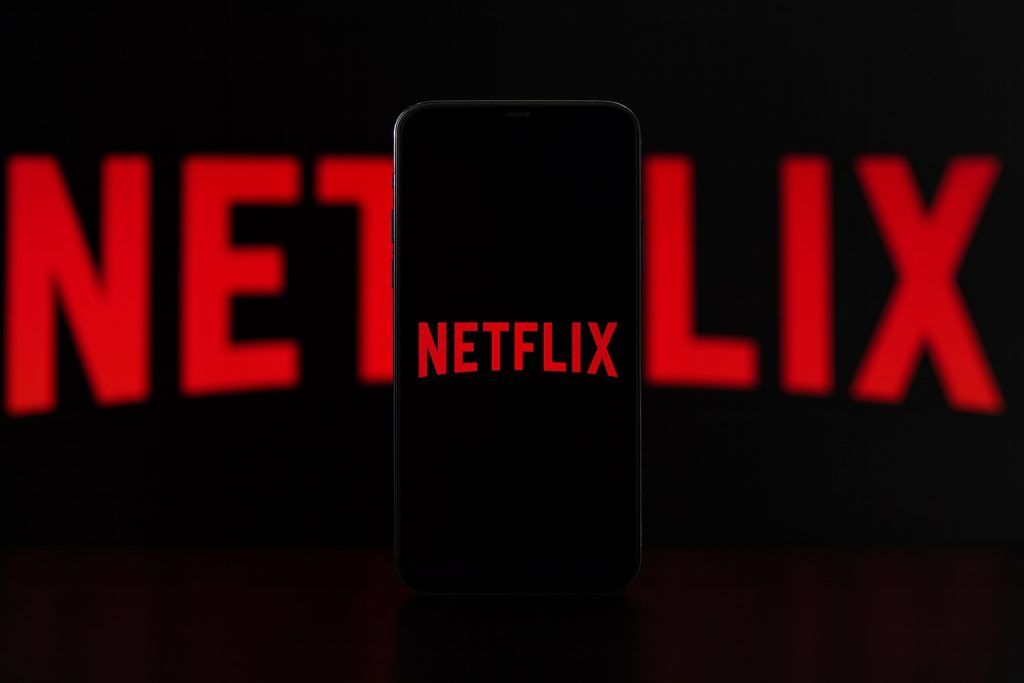- WMT price/performance: Walmart (NYSE: WMT) was around $106 on Oct. 23, 2025, up ~1% on the day [1] and trading near its 52-week high ($109.58 on Oct. 16) [2]. The shares have climbed roughly 30% over the past year [3] (≈18% YTD [4]), outpacing many peers.
- AI partnership: On Oct. 14 Walmart announced a major AI tie-up with OpenAI, allowing customers to shop inside ChatGPT via “Instant Checkout” [5]. CEO Doug McMillon hailed the move as ushering in a new “AI-first” shopping experience [6]. OpenAI’s Sam Altman said the integration makes “everyday purchases a little simpler” and “will help people every day” [7].
- Financial results: In Q2 FY2026 (ended July 2025) Walmart reported solid comps and e-commerce growth: U.S. same-store sales rose ~4.6% (Sam’s Club +5.9%) [8], and U.S. e-commerce sales jumped about 25–26% [9] [10]. Total revenue was $177.4 billion (+4.8% YoY) [11]. Management emphasized “operating discipline” and investment in higher-margin segments (ads, memberships) [12] while raising full-year guidance after the quarter [13].
- Analyst targets: Wall Street remains mostly bullish. Consensus 12-month price targets center around $112–115 [14] [15] (roughly +7–10% upside). Recent upgrades include UBS’s $122 target (Buy) [16], BTIG’s $120 (Buy) [17], and D.A. Davidson’s $117 (Buy) [18]. Analyst ratings are overwhelmingly positive (all 31 tracked analysts rated WMT a Buy or Hold) [19] [20].
- Macroeconomy & rivals: The broader retail environment is improving as the Fed has begun easing policy (a 2025 rate cut was delivered with more signaled [21]). Walmart’s value positioning may benefit from steady consumer spending. For context, Amazon and Costco remain strong, while Target’s stock has lagged. Notably, BTIG recently started Target with a Neutral rating (citing competitive pressure) even as it began Walmart at Buy (PT $120) [22]. On the labor front, Walmart halted offers for H-1B visa candidates after the U.S. imposed a new $100K fee [23], reflecting regulatory headwinds.
Market Snapshot
Walmart’s stock has hit new highs in mid-October 2025. Investors cheered the Oct. 14 announcement of a ChatGPT shopping integration, which drove WMT shares up roughly 3–5% that day to about $107 by the close [24]. That closing price marked a new 52-week and all-time high for the stock [25]. Overall, Walmart is up ~30% over the past 12 months [26] (about +18–19% year-to-date [27]), outpacing the S&P 500 and many retail peers. Its market capitalization now stands around $850–855 billion [28]. Despite the strong run, WMT trades at a premium (forward P/E ~30–35×) on expectations of continued growth.
Walmart’s vast logistics network (seen here in Texas) underpins its omnichannel strategy. The company blends physical store sales with booming online and advertising businesses to drive growth. [29] [30]
Behind the rally, Walmart’s fundamentals remain solid. In Q2 FY2026 (ended July 31, 2025) total revenue was $177.4 billion, up about 4.8% year-over-year [31]. Same-store sales in the U.S. (ex-fuel) rose ~4.6%, and Sam’s Club comps gained ~5.9% [32]. Online channels were particularly strong: U.S. e-commerce sales jumped about 25–26% [33] [34] and global digital sales grew over 20%. High-margin segments also fueled results – for example, Walmart Connect (digital advertising) and membership services grew sharply. Management said it “maintained [its] operating discipline” while investing in these higher-margin lines [35]. As a result, Walmart raised its full-year sales and EPS guidance during the quarter, reflecting confidence in continued momentum [36].
AI and Digital Strategy
A central driver of the stock’s recent jump was Walmart’s first-mover push into AI-powered shopping. On Oct. 14 the company announced a partnership with OpenAI to let customers buy items directly through ChatGPT’s chat interface [37]. In practice, a shopper can simply tell the AI assistant what they need (e.g. “meals for the week” or “office supplies”) and complete the purchase via ChatGPT’s “Instant Checkout,” with Walmart handling fulfillment. CEO Doug McMillon said this will transform the user experience: “for many years… eCommerce shopping experiences have consisted of a search bar and a long list of item responses. That is about to change,” moving toward a more “personalized and contextual” AI-driven approach [38]. OpenAI CEO Sam Altman echoed the enthusiasm, calling the tie-up “one way AI will help people every day” by simplifying shopping [39].
Analysts also greeted the move positively. UBS’s Michael Lasser noted that integrating ChatGPT provides “incrementality and differentiation vs. the rest of retail” [40] – in other words, a unique advantage over competitors. D.A. Davidson analyst Michael Baker went further, writing that Walmart “will emerge as a winner among traditional retailers in the Agentic Commerce race,” thanks to its scale and early AI investments [41]. (“Agentic Commerce” refers to proactive AI shopping assistants.) Indeed, the combination of Walmart’s data assets (through its Walmart Connect media network and purchase data) and this new OpenAI link could help drive additional sales. In short, the market interpreted the AI announcement as a major strategic shift, which explains the quick stock reaction [42].
Recent Earnings and Growth
Walmart’s recent earnings affirm the underlying strength that analysts cite. In Q2 FY2026 the company saw broad growth across segments. Comp-store sales (U.S.) at Walmart stores grew +4.6% (excluding fuel) and Sam’s Club comp sales +5.9% [43]. Membership fees also rose (driven by higher Sam’s Club membership tiers), and worldwide e-commerce sales climbed roughly 25% [44] [45]. Even with rising costs, these higher-margin areas (online ads, memberships) boosted profitability. Chief Financial Officer John Rainey noted that Walmart is focusing capital on the “highest returns” – meaning projects like digital fulfillment, AI tools, and store remodeling – while “controlling costs through disciplined execution” [46]. The result was solid top-line growth (+4–5%) and the flexibility to reward shareholders (Walmart still yields about 2% via dividends).
Walmart’s strong quarter also cleared the way for a modest boost to guidance. Management told investors it would lift its forecast for FY2026 sales and earnings based on the results [47]. Key metrics like same-store traffic (up over Q2 last year) and inventory management (tightened ahead of the holidays) give a positive view for upcoming months. However, Walmart’s growth is expected to slow to more normal mid-single-digits in the coming fiscal year, as the company laps its big gains and as consumer spending faces headwinds.
Analyst Outlook and Forecasts
Wall Street analysts are largely constructive on Walmart’s shares. Roughly 30 of 31 rated WMT a Buy or Hold, with consensus advice “Moderate Buy” [48] [49]. The average 12-month price target across analysts is in the $112–113 range (about 6–8% above current levels) [50] [51]. The top-end forecasts are even higher – for example, Wolfe Research has a $129 target on WMT [52], while UBS’s Michael Lasser lifted his target to $122 [53] after the AI news. BTIG, which initiated coverage on Oct. 15, set a $120 target and rated WMT a Buy [54]. D.A. Davidson’s Baker reiterated a Buy rating with a $117 target [55]. TipRanks shows all 29 of its tracked analysts giving WMT a Buy in the past three months [56] [57]. In short, the median targets cluster around the mid-$110s, and many see room for Walmart to rally into the $120s if execution stays on track.
On the downside, some commentators note Walmart’s high valuation: its forward price/earnings is around 36× [58], above peers. That multiple assumes sustained outperformance. For now, most analysts seem willing to pay up for WMT’s mix of recession-resistant groceries, growing membership revenue, and now AI-driven tech boosts. Forecast consensus generally calls for sales growth of ~4% annually in FY2026 and similar modest EPS gains [59]. The stock market’s faith is evident in Walmart’s dividend (≈$2.20/shr/year) and a “Strong Buy” consensus score on TipRanks (all analysts favor the stock) [60].
Market and Competitor Context
Walmart’s performance must be seen in broader context. The U.S. economy is cooling modestly, and the Federal Reserve has shifted to an easing stance. Markets expect more rate cuts by year-end [61], which could bolster consumer spending around the holidays. For retailers, the picture is mixed: Amazon’s cloud and shopping businesses still grow but its stock price has been flat in 2025 amid high valuations. Costco (COST) continues to do well with its membership model, though it’s a smaller company than Walmart. Target (TGT), by contrast, has struggled; retailers have reported weaker-than-expected seasonal inventory and promotional issues recently. This week, BTIG highlighted those competitive pressures by initiating Target with a Neutral rating, even as it started Walmart with a Buy at $120 [62].
Walmart also faces unique headwinds. In late October 2025, it paused U.S. job offers to H‑1B visa candidates after the Biden administration implemented a $100,000 fee on these visas [63]. This move shows how rising labor costs and regulation (including recent state labor law changes) are a concern. Still, Walmart’s scale and continued investment in tech give it an edge. Its nationwide store footprint and low-price promise provide a hedge against inflationary pressures on consumers.
Looking ahead, near-term catalysts include the upcoming holiday shopping season and the launch of the ChatGPT feature (expected to roll out to consumers soon). Walmart will next report Q3 earnings on Nov. 20, 2025 (for Q3 FY2026). Analysts will be watching whether digital sales stay strong and whether the AI partnership translates to measurable sales gains. In the longer run, Wall Street’s bull cases see WMT reaching the mid-to-high $100s in 2026 if growth momentum holds – some even peeking toward $130+ over the next 12–18 months [64] [65]. For now, most experts view Walmart as a moderate Buy, citing its diverse growth engines (grocery & essentials, e-commerce, and ad/membership businesses) and positioning for “steady, not explosive, gains” in the years ahead.
Sources: Official Walmart press releases and earnings reports [66] [67]; Reuters/Investing.com analyses [68] [69]; financial data from TradingView [70] and MarketBeat [71]; expert commentary (UBS, DA Davidson, BTIG) as reported by news and research services [72] [73] [74] [75]. (All figures as of Oct. 23, 2025.)
References
1. www.tradingview.com, 2. m.investing.com, 3. m.investing.com, 4. ts2.tech, 5. corporate.walmart.com, 6. corporate.walmart.com, 7. corporate.walmart.com, 8. corporate.walmart.com, 9. corporate.walmart.com, 10. corporate.walmart.com, 11. ts2.tech, 12. corporate.walmart.com, 13. ts2.tech, 14. ts2.tech, 15. www.benzinga.com, 16. m.investing.com, 17. www.investing.com, 18. www.investing.com, 19. ts2.tech, 20. www.benzinga.com, 21. www.gonzaga.edu, 22. www.investing.com, 23. www.bloomberg.com, 24. ts2.tech, 25. ts2.tech, 26. m.investing.com, 27. ts2.tech, 28. ts2.tech, 29. corporate.walmart.com, 30. corporate.walmart.com, 31. ts2.tech, 32. corporate.walmart.com, 33. corporate.walmart.com, 34. corporate.walmart.com, 35. corporate.walmart.com, 36. ts2.tech, 37. corporate.walmart.com, 38. corporate.walmart.com, 39. corporate.walmart.com, 40. ts2.tech, 41. www.tipranks.com, 42. ts2.tech, 43. corporate.walmart.com, 44. corporate.walmart.com, 45. ts2.tech, 46. corporate.walmart.com, 47. ts2.tech, 48. ts2.tech, 49. www.benzinga.com, 50. www.marketbeat.com, 51. www.benzinga.com, 52. www.benzinga.com, 53. m.investing.com, 54. www.investing.com, 55. www.investing.com, 56. www.tipranks.com, 57. www.tipranks.com, 58. ts2.tech, 59. ts2.tech, 60. www.tipranks.com, 61. www.gonzaga.edu, 62. www.investing.com, 63. www.bloomberg.com, 64. www.benzinga.com, 65. www.tipranks.com, 66. corporate.walmart.com, 67. corporate.walmart.com, 68. www.investing.com, 69. ts2.tech, 70. www.tradingview.com, 71. www.marketbeat.com, 72. corporate.walmart.com, 73. www.tipranks.com, 74. ts2.tech, 75. www.bloomberg.com







